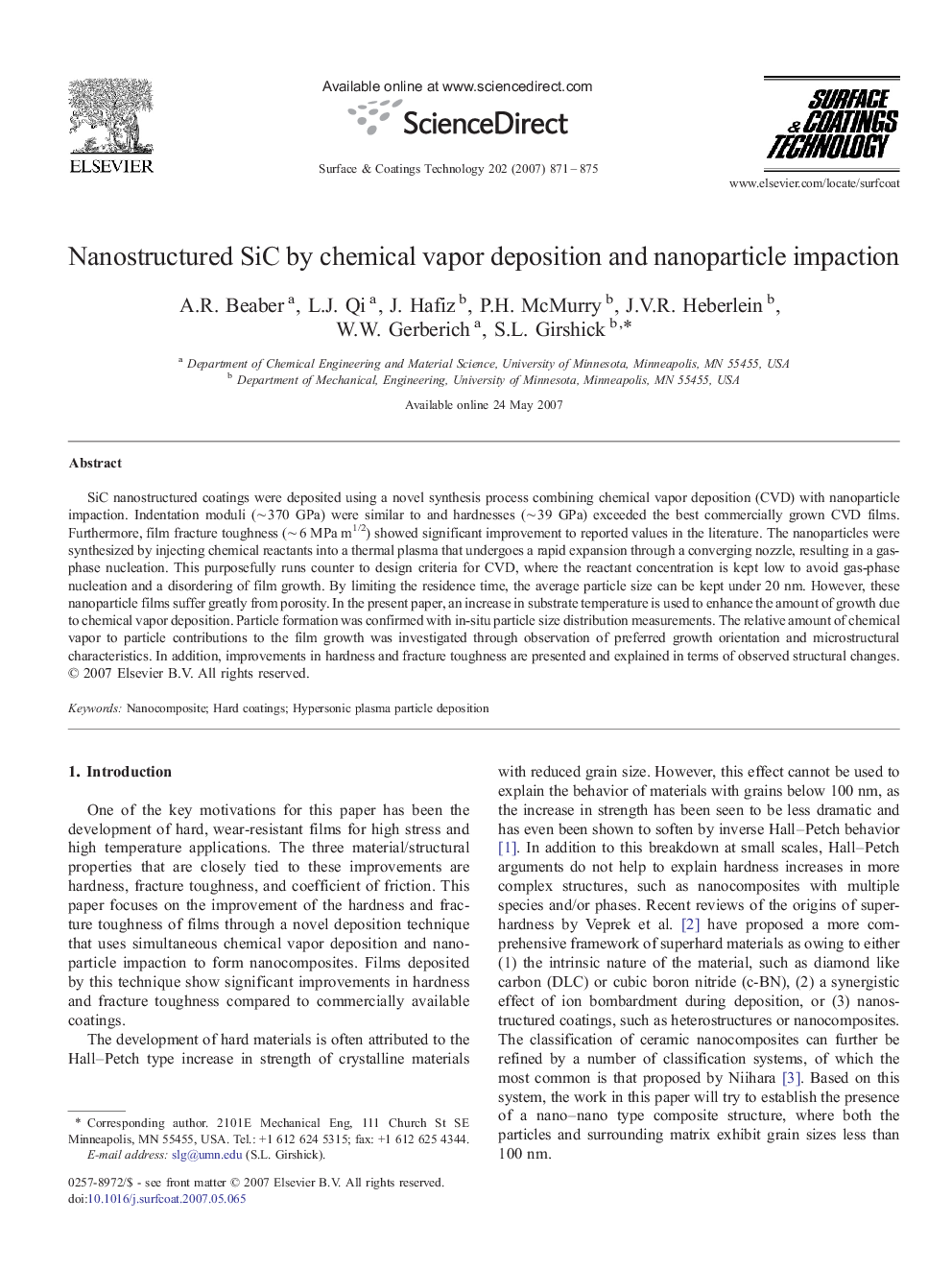| کد مقاله | کد نشریه | سال انتشار | مقاله انگلیسی | نسخه تمام متن |
|---|---|---|---|---|
| 1661680 | 1517695 | 2007 | 5 صفحه PDF | دانلود رایگان |

SiC nanostructured coatings were deposited using a novel synthesis process combining chemical vapor deposition (CVD) with nanoparticle impaction. Indentation moduli (∼ 370 GPa) were similar to and hardnesses (∼ 39 GPa) exceeded the best commercially grown CVD films. Furthermore, film fracture toughness (∼ 6 MPa m1/2) showed significant improvement to reported values in the literature. The nanoparticles were synthesized by injecting chemical reactants into a thermal plasma that undergoes a rapid expansion through a converging nozzle, resulting in a gas-phase nucleation. This purposefully runs counter to design criteria for CVD, where the reactant concentration is kept low to avoid gas-phase nucleation and a disordering of film growth. By limiting the residence time, the average particle size can be kept under 20 nm. However, these nanoparticle films suffer greatly from porosity. In the present paper, an increase in substrate temperature is used to enhance the amount of growth due to chemical vapor deposition. Particle formation was confirmed with in-situ particle size distribution measurements. The relative amount of chemical vapor to particle contributions to the film growth was investigated through observation of preferred growth orientation and microstructural characteristics. In addition, improvements in hardness and fracture toughness are presented and explained in terms of observed structural changes.
Journal: Surface and Coatings Technology - Volume 202, Issues 4–7, 15 December 2007, Pages 871–875